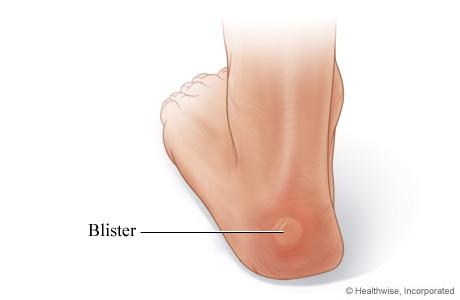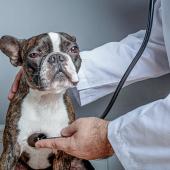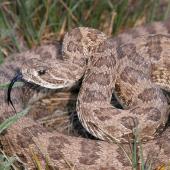Rubbed the Wrong Way
The raw truth about blisters.
A blister is your skin going postal. When held in too close contact and rubbed the wrong way over a prolonged period without relief, a blister forms, and the metaphorical government employee has a breakdown.
At home a blister is a minor nuisance, but on a long trek or the beginning of your once-in-a-lifetime paddling adventure, a stupid little blister can ruin your trip. If it becomes infected in a remote place, it can even threaten your health.
The three key elements for blister formation are:
1) improper space between your skin and that with which it is in contact
2) repetitive motion
3) moist skin
These combine to create friction. The repeated tugging or shearing action on the skin causes the surface layer to separate from the layer underneath. The separation then fills with tissue fluid, creating the blister. Thicker skin, such as on palms and feet, is most susceptible. If the trauma persists, the blister breaks and becomes a thin, sensitive, weepy area.
The Prevention
The best treatment for blisters is prevention. Proper space between your skin and your shoe or paddle handle can either be too little or too much. If you reduce excessive space, you reduce motion—to do so when paddling, get a different or better grip on the handle. Foam grips on your oars may feel cushy, but they can increase motion and friction. Wearing a glove with a tacky palm may give you a firmer grip on bars, clubs, and handles.
If you increase space, you can decrease contact—so buy a shoe that allows room for your feet to swell and doesn’t put a lumpy seam right over your bunion. Buy your boots in the afternoon, when your feet are their largest. Carefully check for adequate height in the toe box, width in the forefoot, and space at both ends. Check the amount of heel lift by standing or walking up the little ramp boot stores often have; it should not exceed one-quarter or one-half inch.
Moisture is a key component. If your skin is totally wet or totally dry, it will slide easily. The problem is that most of our summer sports cause us to perspire, which creates the worst case—damp skin. For those whose feet or hands tend to perspire, applying a drying powder prior to dry-land sports may be helpful. Some people have tried anti-perspirant sprays or solutions to keep dry, but benefits have not been clear and some people get irritation.
Directly reducing friction is also helpful. Petroleum jelly works, with mixed results. Body Glide, Runner’s Lube, and Sport Slick are newer products specifically designed to reduce friction, which some people find helpful.
Because blisters sideline a huge portion of recruits in training, the U.S. military has done extensive research on blister prevention. Their number-one recommendation is to use a smooth, wicking sock—either wool or synthetic, but never cotton. Dual-layer socks incorporate both features in one sock.
The Treatment
If despite your best efforts you start to get a blister, stop what you are doing and deal with it as early as possible. If you catch the blister at the “hot spot” stage, in which the skin is irritated from the friction and heat, you may be able to prevent the injury from progressing. At this point, get your skin cooled off and dry. Moleskin is the traditional remedy, but I always find that it rolls up at the edges and makes the problem worse.
Modern Medicine
Newer products, like Second Skin, Blister Block, Cushion Blister Treatment, or the liquid NuSkin may be a better solution. Medical products like Opsite and Vigilon are very likely to be effective, but they’re expensive.
When a blister has already formed, the best advice seems to be “leave it intact” rather than “prick it with a sterile needle,” but good studies are lacking. Whichever your preference, apply an antibiotic ointment and vigilantly watch for increasing redness, pain, or pus-like drainage, which indicate infection. If that happens, soak the area frequently in hot water until you can get medical help. Hopefully, you can effectively prevent the blister and not need to bring me your infected foot.
Dean Center, M.D., is a physician at Family Doctors' Urgent Care in Bozeman.
Beating the Heat
That’ll Leave a Mark
I was surprised a couple of weeks ago to see a redheaded fellow with a nasty sunburn. It seemed that by now he would have learned how to take care of his very susceptible skin. He said he’d put on sunscreen at the beginning of his day outside, but apparently it wasn’t enough. He thought his perspiring might have reduced the effectiveness. This guy’s perspiration should be your inspiration to follow three rules of sunscreen:
First, if you’re swimming or perspiring heavily, your sunscreen needs to be reapplied during the course of your day.
Sunscreen lesson number two requires a little quick arithmetic. The redhead’s SPF 30 sunscreen reduced his effective sun exposure to 1/30 of his actual time outside. In essence, it converted his eight hours of sun exposure to 16 minutes. Unfortunately, very fair redheads can burn in as little as 10-12 minutes, as he did.
Sunscreen lesson number three is to move around and keep your head about you. A bunch of people are going to float the Madison in the next few months, and many are going to get severe sunburns and radiation damage on their shins. Alcohol, reclining in the same position for hours, and inadequate or washed-off sunscreen are literally going to leave their mark.
Don’t Drink the Kool-Aid
There is absolutely no scientific evidence to support statements that all of us should drink eight glasses of water a day. So, under normal circumstances, people under 75 should drink what seems to satisfy their thirst.
Conditions of prolonged exertion and exposure are not normal. In dry mountain heat and sun, your perspiration evaporates so fast you don’t notice you are sweating, so you don’t realize how much fluid you’re losing. This can adversely affect kidney function, at best, and threaten your life, at worst.
You can monitor the color of your urine, but then you’re playing catch-up. Your performance will already have suffered by the time you notice it’s dark. Also, being dry will mean you have less pee to check on.
Better to hydrate before you actually need to. One-half to one quart (or liter) an hour, depending on heat index and level of exertion, is a commonly recommended amount and should be effective for most people under most circumstances.












